Currently, we are well versed in the limits of human endurance and consequently, view ourselves as considerably more civilized than our ancestors. However, if a person from just a hundred years ago were shown a torture device from long ago, their probable response would be that of disgust, along with a verdict of you being inhumane.
These torture devices make methods like mock executions look like child’s play in comparison. They’re heinous and horrific by any standard, and many remain in use today in nations where human rights are almost non-existent.
This list explores 25 ancient torture devices that would make anyone confess to anything so that they could stop suffering from the excruciating pain inflicted upon them by the evil people who designed these horrific torture devices.
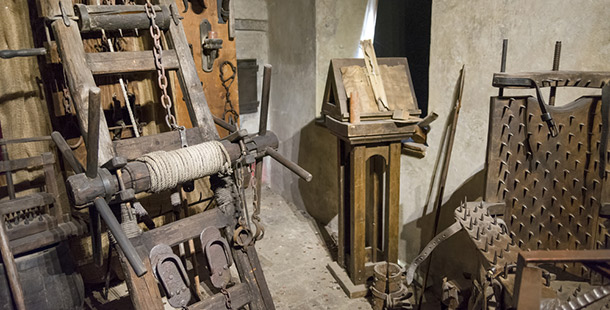
Stocks
 Source: http://www.medievalchronicles.com/medieval-torture-devices/stocks-torture-device/
Source: http://www.medievalchronicles.com/medieval-torture-devices/stocks-torture-device/ Widely used in medieval times, the Stocks were made out of two hinged wooden boards with three holes cut out to fit the head and two arms. Sometimes the feet would also be bound. The torture victim would often be left out in public to be humiliated. On rare occasions, they would die from the elements after being left for days.
Water Torture
 Source: en.wikipedia.org
Source: en.wikipedia.org Used during the Spanish Inquisition, water torture isn’t painful so much as psychologically damaging. The victim would be strapped to a chair where tiny droplets of water would fall on their forehead. Over a long period of time, the anxiety and stress would break the strongest person. MythBusters tested it out and concluded its effectiveness.
Strappado
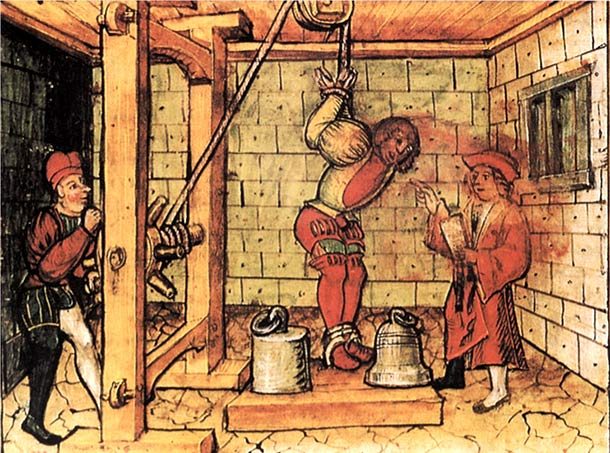 Source: https://www.planetdeadly.com/human/medieval-torture-devices
Source: https://www.planetdeadly.com/human/medieval-torture-devices The Strappado was also used during the Inquisition and a unique way of torturing people. Priests would tie the victim’s hands behind their back and then, using the Strappado, lift and hang them in the air. This would pull their arms up behind their back, likely dislocating them.
As you might imagine, this was painful, but the priests also had two ways to make it worse. The first was to slightly drop the victim and then stop them, making the rope snap a bit. The other way was to hang weights from their ankles.
The Rack
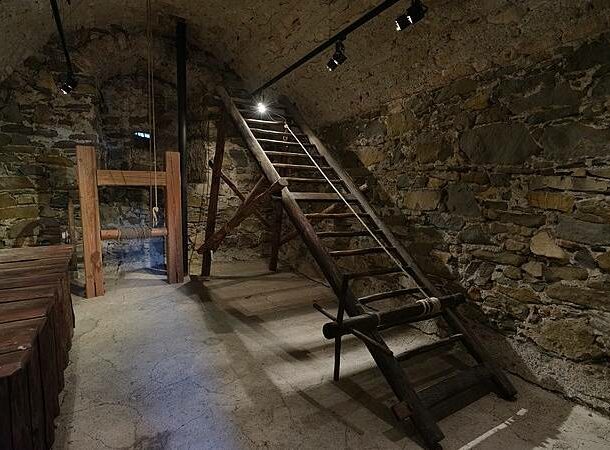 Source: https://www.britannica.com/technology/rack-torture-instrument Image: en.wikipedia.org
Source: https://www.britannica.com/technology/rack-torture-instrument Image: en.wikipedia.org Used during the middle ages, The Rack was a wooden bed with four ropes, two for tying the legs and two others for the arms. The victim would slowly have their arms and legs pulled until they dislocated, the bones broke, and sometimes the limb came off entirely. It was used to try to extract confessions from heretics or traitors.
Zanzhi
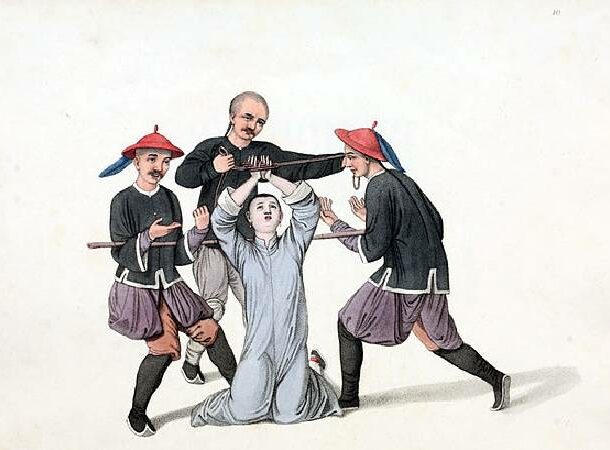 Source: en.wikipedia.org
Source: en.wikipedia.org Zanzhi was a form of Chinese torture. It used a device that tied sticks and strings to the victim’s fingers. If the victim didn’t confess or give the information needed, the device would slowly crush and break the fingers.
Related Article: 25 Revealing Photographs Of Chinese Toy Factory Workers
Scold's Bridle
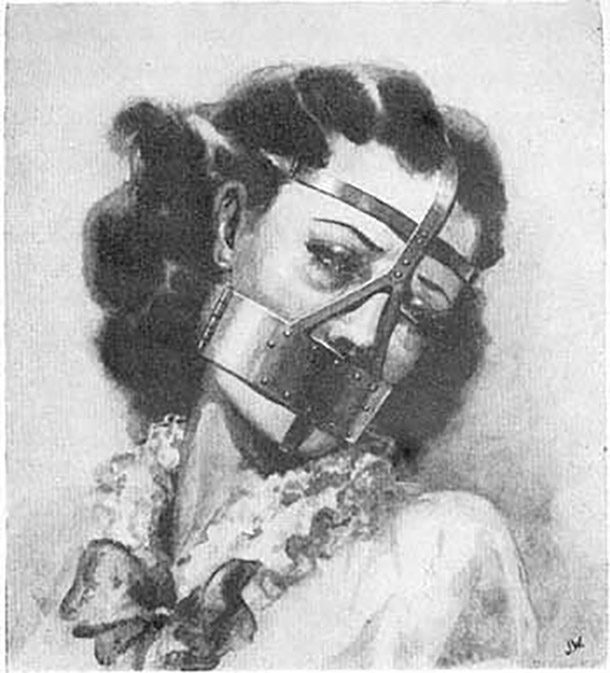 Source: http://allthatsinteresting.com/scolds-bridle
Source: http://allthatsinteresting.com/scolds-bridle To punish their wives for gossiping, husbands in the middle ages would use the Scold’s Bridle. It involved strips of iron attached to a muzzle that was placed around the woman’s head to keep her quiet and humiliate her. Often, the victim would be brought to town to show everyone that she’d been gossiping.
Iron Chair
 Source: Shutterstock.com
Source: Shutterstock.com A terrifying Medieval torture device, the Iron Chair invoked about as much fear looking at it as being subjected to it. Covered in hundreds of sharp spikes, the victim would be forced to sit on it. They’d then be strapped down and the torturers would light a fire underneath the chair to roast the victim.
The Rat Torture Device
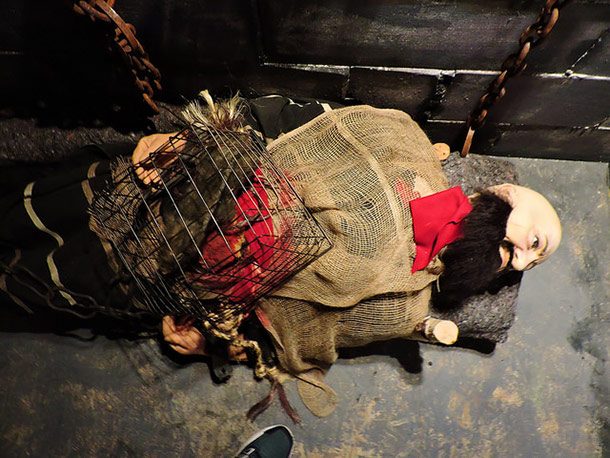 Source: http://www.medievality.com/rats.html
Source: http://www.medievality.com/rats.html Rat torture is one of the most controversial and brutal forms of torture ever used. The victim was typically tied to the ground, with their feet bound together and their hands tied to a post above their head. Usually, the torturer would place a metal box full of rats on the victim’s stomach.
The rats, desperate to escape, would burrow through the victim’s stomach. Sometimes this would be done with more than one rat. With each new rat that entered the container, they would gnaw at the victim’s flesh even more. In many cases, the victim would bleed to death from the wounds inflicted by both the animals and his own frantic attempts to free himself.
Catherine Wheel
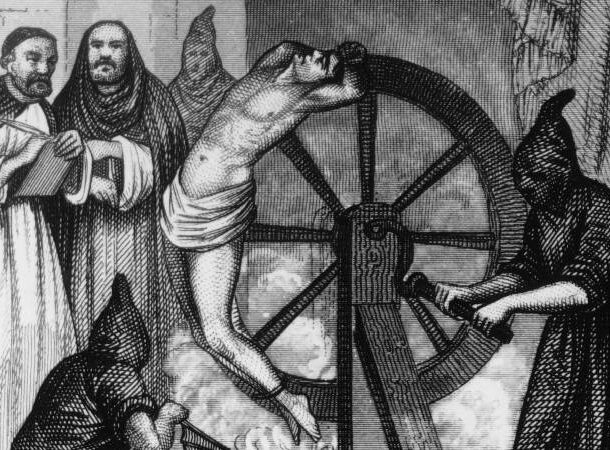 Source: https://www.medievalchronicles.com/medieval-torture-devices/catherine-wheel/
Source: https://www.medievalchronicles.com/medieval-torture-devices/catherine-wheel/ The Catherine Wheel is also known as Breaking Wheel. It was a terrible instrument of torture used in the Middle Ages. Victims were tied to the wheel and their limbs were stretched out along spokes. The wheel was then turned so that it would break the bones within their body.
This often led to death from blood loss or organ failure. Most people died on this device. However, if they managed to survive, they faced an excruciating recovery process during which many had no hope of ever walking again.
Coffin Torture
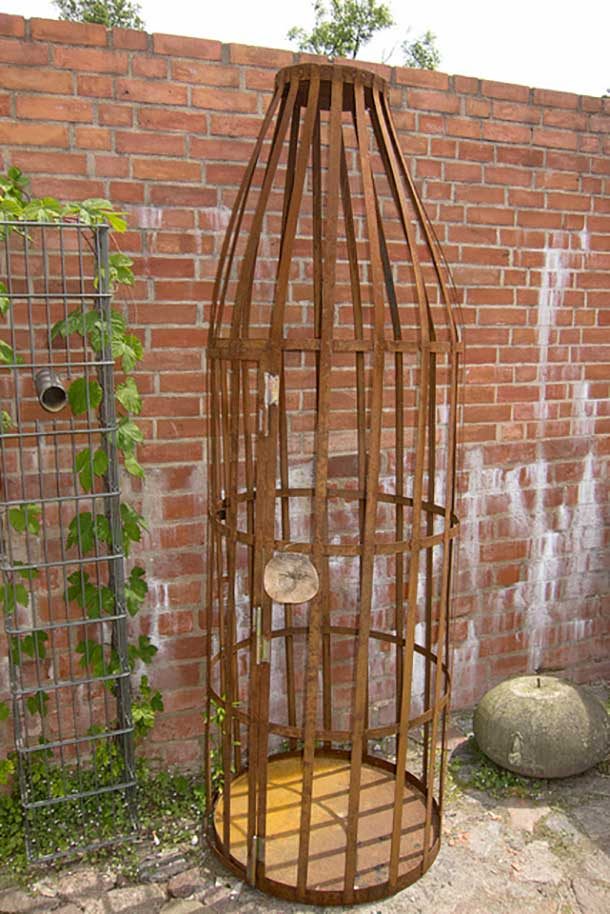 Source: http://www.medievality.com/coffin-torture.html
Source: http://www.medievality.com/coffin-torture.html Using large strips of iron, blacksmiths in the middle ages would create a hollow coffin in the shape of a person. Victims would be forced inside and hung up to die under the scorching hot sun while being eaten by animals.
Wooden Horse
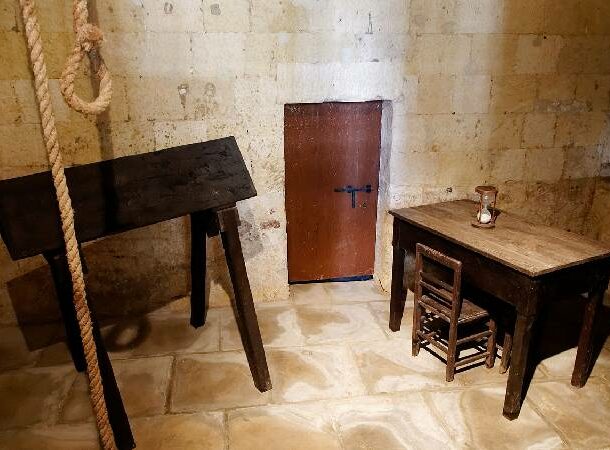 Source: en.wikipedia.org
Source: en.wikipedia.org The Wooden Horse, also known as the Spanish Horse, was used during the Spanish Inquisition. The victim would first be stripped naked and their arms and legs would be tied to the horse as they sat on it. With their feet not touching the ground to take off any pressure, it would be extremely painful and ended usually in the rupturing of the perineum and extensive blood loss.
Thumbscrew
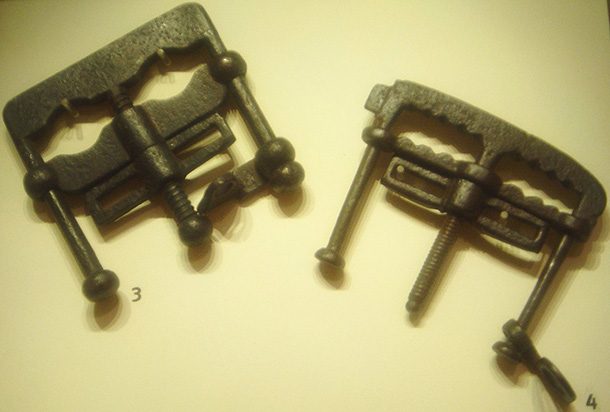 Source: https://www.thevintagenews.com/2016/11/23/thumbscrew-notoriously-effective-torture-device-used-medieval-times-get-prisoner-confess/
Source: https://www.thevintagenews.com/2016/11/23/thumbscrew-notoriously-effective-torture-device-used-medieval-times-get-prisoner-confess/ The Thumbscrew was similar to the Chinese Tien Zu. Using a metal clamp, the victim’s thumbs would be inserted and the clamp would slowly close on the thumbs. If the victim didn’t confess or provide information, their thumbs would endure horrible pain before breaking altogether.
Related Article: 25 Strange Travel Tips From The Chinese Government
Scavenger's Daughter
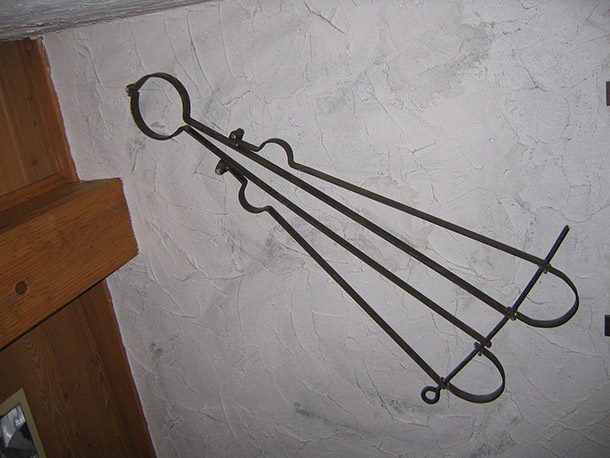 Source: https://history.howstuffworks.com/10-medieval-torture-devices8.htm
Source: https://history.howstuffworks.com/10-medieval-torture-devices8.htm Invented by a British man named Skevington, the Scavenger’s Daughter was a popular torture device during the reign of Queen Elizabeth I. It was a hoop of iron with a hinge in the middle. The victim would be forced to crouch on one half of the hoop while the other was placed over his back. The hinge would be slowly tightened, crushing the victim’s back and breaking breastbones and ribs.
Judas Chair
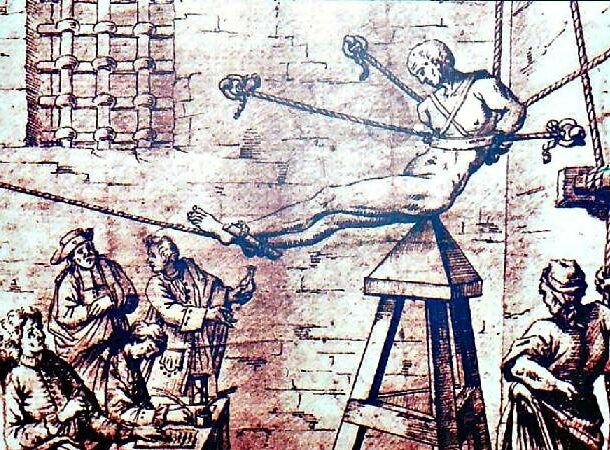 Source: historyrundown.com
Source: historyrundown.com The Judas Chair is a pyramid-shaped torture device that consists of four legs and an attached pointed edge for penetrating the anus or vagina. The victim would be tied up by ropes before being inserted through the pointed edge.
The metal seat would gradually sink into the person’s body, eventually reaching their organs and crushing them. In addition to the excruciating pain, victims would have died from shock or loss of blood as well. There are many accounts that this type of torture device was often used to force confessions out of women accused of witchcraft.
Heretic's Fork
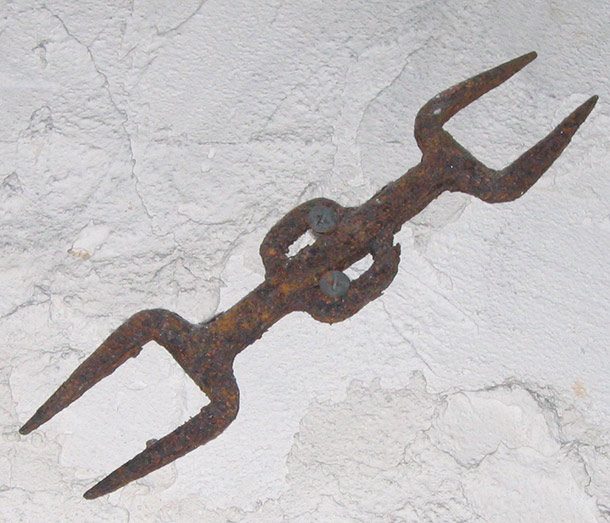 Source: http://torturemuseum.net/en/the-heretics-fork/
Source: http://torturemuseum.net/en/the-heretics-fork/ The Heretic’s Fork was one of the most brutal ancient torture devices in history. It consisted of two forks that were connected to a bar. One pointed end went just underneath the victim’s chin while the other would be pointed down into the person’s sternum.
Even the slightest movement of the jaw would result in unbelievable anguish. This caused incredible pain and not only forced people to confess to whatever crime they were accused of but also revealed their deepest secrets and fears which could be used against them later on during their trial.
Instep Borer
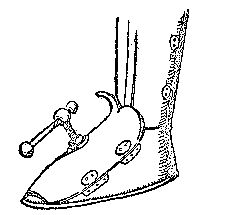 Source: http://www.medievalwarfare.info/torture.htm
Source: http://www.medievalwarfare.info/torture.htm Used in Germany, the Instep Borer was a nasty way to torture a person’s foot. The victim would have their bare foot placed inside a metal shoe. Slowly, the torturer would twist a crank and a sharp spike would gradually burrow into the victim’s foot. The wound was so large, it was common for the victim to die of a bacterial infection.
The Spanish Tickler
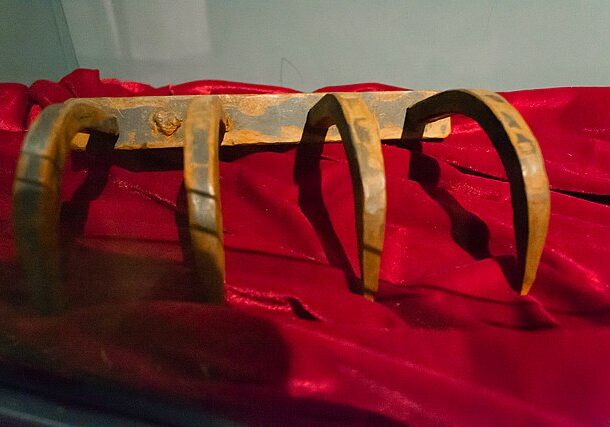 Source: en.wikipedia.org
Source: en.wikipedia.org The Spanish Tickler is a torture device that was used in most of Europe during the Middle Ages for the purpose of extracting confessions. It was mainly used on those accused of practicing Judaism, and it consisted of a series of spikes that would be placed against the victim’s chest and then pressed together with force. The spikes are so sharp, they can pierce through anything. This not only caused the person great pain but also made it difficult to breathe. The Spanish Tickler can be seen in different museums around the world.
Related Article: 25 Reasons Why Barcelona Is A Great Place To Live
Intestinal Crank
 Source: http://www.medievalwarfare.info/torture.htm#crank
Source: http://www.medievalwarfare.info/torture.htm#crank You can probably guess what the intestinal crank does, but we’ll tell you anyway. The torturer would make an incision in the abdomen and attach the upper part of the intestine to a crank. By turning the crank, it would extract the intestines from the victim while they were still alive. They would eventually die, but it would be a long, slow, and painful process.
Pear of Anguish
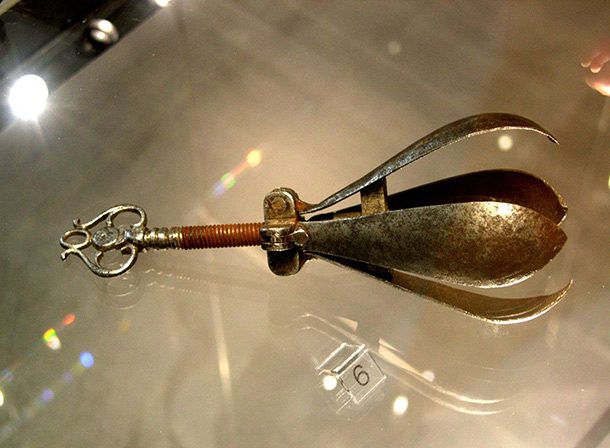 Source: https://history.howstuffworks.com/10-medieval-torture-devices10.htm
Source: https://history.howstuffworks.com/10-medieval-torture-devices10.htm The Pear of Anguish was a torture device used in Europe from the 17th to the 19th century. The pear-shaped device is inserted into a person’s anus or vagina and expanded by turning a screw. This would tear apart the person’s inner walls and create excruciating pain.
It was used as an interrogation tool during trials, so it wasn’t just reserved for criminals. To make matters worse, some versions had spikes on the inside that would increase the pain.
Brazen Bull
 Source: https://history.howstuffworks.com/10-medieval-torture-devices1.htm
Source: https://history.howstuffworks.com/10-medieval-torture-devices1.htm The brazen bull was a torture device created by Perillos of Athens. He proposed this device to Phalaris, the tyrant of Akragas in Sicily. The victim would be locked inside the hollow statue and roasted to death over a fire.
The brazen bull’s metal surface made it impossible for the victim to escape from inside. What resulted was a truly gruesome way to die: screaming in agony as one’s flesh is gradually burnt off their bones until one suffocates or dies of exhaustion.
Related Article: 25 Influential Pieces Of Ancient Greek Architecture
Breast Ripper
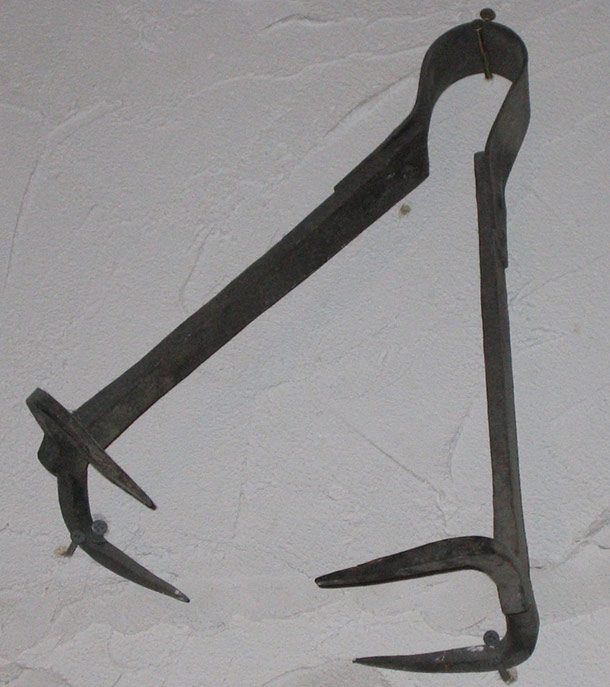 Source: https://history.howstuffworks.com/10-medieval-torture-devices9.htm
Source: https://history.howstuffworks.com/10-medieval-torture-devices9.htm In ancient times, women would be subject to particularly cruel torture. The Breast Ripper is definitely one of those sad and tragic cases. As the name implies, one part of the device would be a claw that sunk into the woman’s breast. They were then tied to a wall and the claw would be ripped away, tearing their breast to shreds.
Iron Maiden
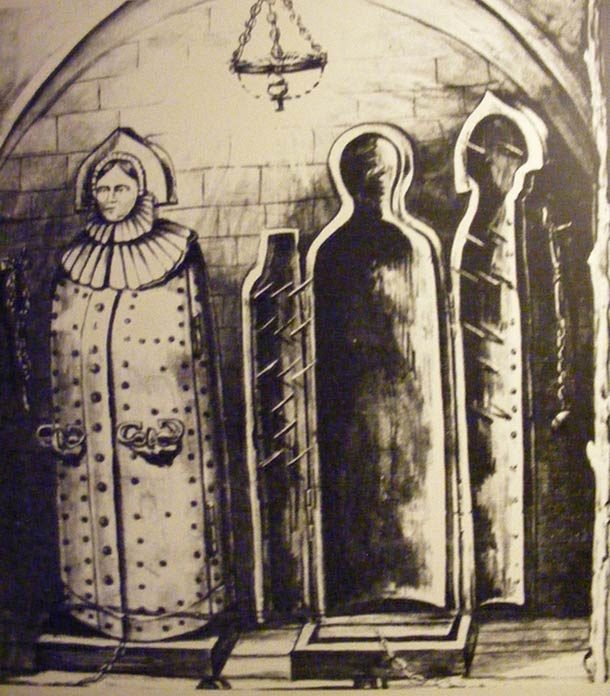 Source: https://history.howstuffworks.com/10-medieval-torture-devices7.htm
Source: https://history.howstuffworks.com/10-medieval-torture-devices7.htm The Iron Maiden was a fearsome torture device that was invented in the 18th century. The device resembled an upright sarcophagus with a hinged door at the front. The victim’s feet were secured to the ground, and their hands and head would be placed inside the iron maiden, whereupon it would be closed up.
The person would then be stabbed through the chest by some of the protruding spikes from within, making this one of the most excruciating devices in history. A few variations of this device existed – some consisted of spiked wheels or blades on one side and spikes on the other side while others were made with two halves; they would open like doors and could close together crushing their contents as they shut.
The Head Crusher
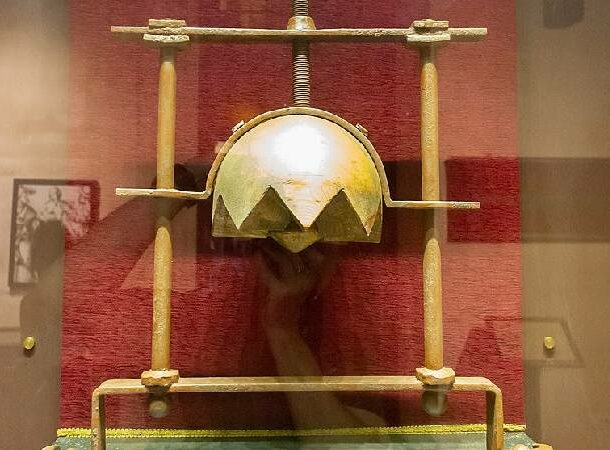 Source: en.wikipedia.org
Source: en.wikipedia.org The head crusher was a brutal medieval torture device that would have been used to extract information from a prisoner. The head crusher was made up of two metal plates, which were either lined with spikes or studded with nails.
The subject’s skull was placed in the middle, and the top plate would be tightened down by means of a screw. This would cause their head to be crushed and their eyes to pop out as they suffocated to death.
The Boots
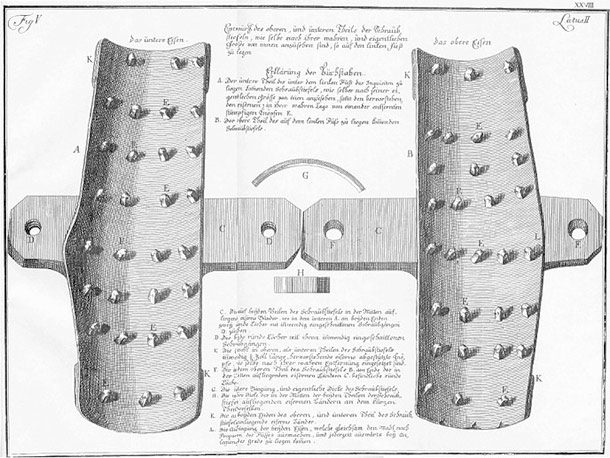 Source: http://www.lordsandladies.org/the-boot-torture.htm
Source: http://www.lordsandladies.org/the-boot-torture.htm The Boots had several variations of torture. Some torturers attached leather boots around the victim’s feet and poured scalding hot water over them. The water was so hot, it dissolved the flesh and sometimes ate through the bone. In other variations, foot roasting was common. The victim’s foot would be slathered with lard and roasted over a fire.
The Saw
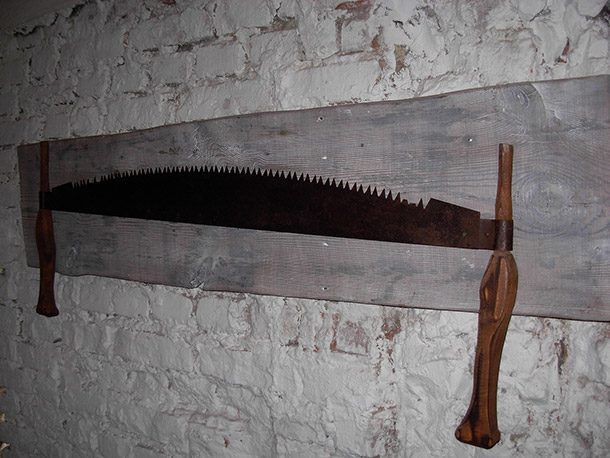 Source: http://torturemuseum.net/en/sawing-hand-saw/
Source: http://torturemuseum.net/en/sawing-hand-saw/ The saw torture is one of the most bizarre and awful methods of torture you will ever hear about. It is said that this type of torture was invented in Imperial China. Basically, what would happen is a person would have their hands tied behind their back so they could not move them; then they would be placed in between two boards with sharp-toothed saws on either side. The saws would slowly start to cut through the person’s arms and legs until they eventually died from blood loss or shock.
If you enjoyed learning about the ancient torture devices, you might also enjoy: 20 Real Torture Dungeons You’ll (Not) Want To Visit



























